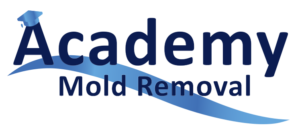Proven Methods on How to Remove Mold from Bathroom Grout
September 21, 2024Top Tips on How to Remove Mold from Bathroom Showers Safely
September 21, 2024Mold on bathroom fixtures, such as faucets, showerheads, and sinks, can be both unsightly and harmful. The constant exposure to moisture in the bathroom makes these areas ideal for mold growth. However, with the right cleaning techniques, you can easily remove mold and prevent it from returning. This complete guide will show you how to remove mold from bathroom fixtures safely and effectively.
Step 1: Gather Your Cleaning Supplies
Before you start, make sure you have the following items on hand:
- White vinegar
- Baking soda
- A toothbrush or small cleaning brush
- A spray bottle
- Hydrogen peroxide (optional for stubborn mold)
- A clean cloth or towel for drying
These simple tools will help you clean mold from bathroom fixtures without damaging the surfaces.
Step 2: Clean with White Vinegar
White vinegar is a natural and powerful cleaner that’s safe for most bathroom fixtures. To start, pour white vinegar into a spray bottle and spray it generously onto the moldy areas of your fixtures. Let the vinegar sit for 15-30 minutes to allow it to break down the mold.
White vinegar is one of the best solutions for learning how to remove mold from bathroom fixtures because it kills mold spores and prevents regrowth without the need for harsh chemicals.
Step 3: Scrub with Baking Soda
After the vinegar has soaked into the mold, it’s time to scrub the affected areas. Make a paste by mixing baking soda with a small amount of water. Apply the paste to the moldy spots on the fixtures and scrub with a toothbrush or small brush. The baking soda helps lift the mold from the surface while acting as a gentle abrasive.
For smaller fixtures like faucets and showerheads, be sure to get into all the nooks and crannies where mold can hide.
Step 4: Rinse and Dry the Fixtures
Once you’ve scrubbed away the mold, rinse the fixtures with warm water to remove any remaining vinegar and baking soda. After rinsing, dry the fixtures with a clean towel. Ensuring that the fixtures are completely dry is important to prevent mold from returning.
Step 5: Use Hydrogen Peroxide for Stubborn Mold
If you encounter mold that isn’t coming off with vinegar and baking soda, you can use hydrogen peroxide as an extra step. Spray a solution of 3% hydrogen peroxide onto the moldy areas of the fixtures and let it sit for 10-15 minutes. Scrub the areas again with a brush, then rinse and dry thoroughly.
Hydrogen peroxide is a great alternative when figuring out how to remove mold from bathroom fixtures that are harder to clean or have been exposed to mold for a longer period.
Step 6: Prevent Future Mold Growth
After you’ve successfully removed the mold from your bathroom fixtures, take steps to prevent it from coming back. Keep your bathroom well-ventilated by using an exhaust fan or opening windows, especially after showers. Wipe down bathroom fixtures regularly to remove moisture and reduce the chances of mold forming again.
Bonus Tip: Soak Removable Fixtures
For removable fixtures like showerheads or faucet aerators, you can soak them in a mixture of vinegar and water. Let the fixture soak for an hour or more, then scrub any remaining mold with a brush and rinse thoroughly.
By following this complete guide on how to remove mold from bathroom fixtures, you can maintain a clean and healthy bathroom environment. Regular cleaning and proper ventilation are key to keeping mold at bay and ensuring that your fixtures stay mold-free.
